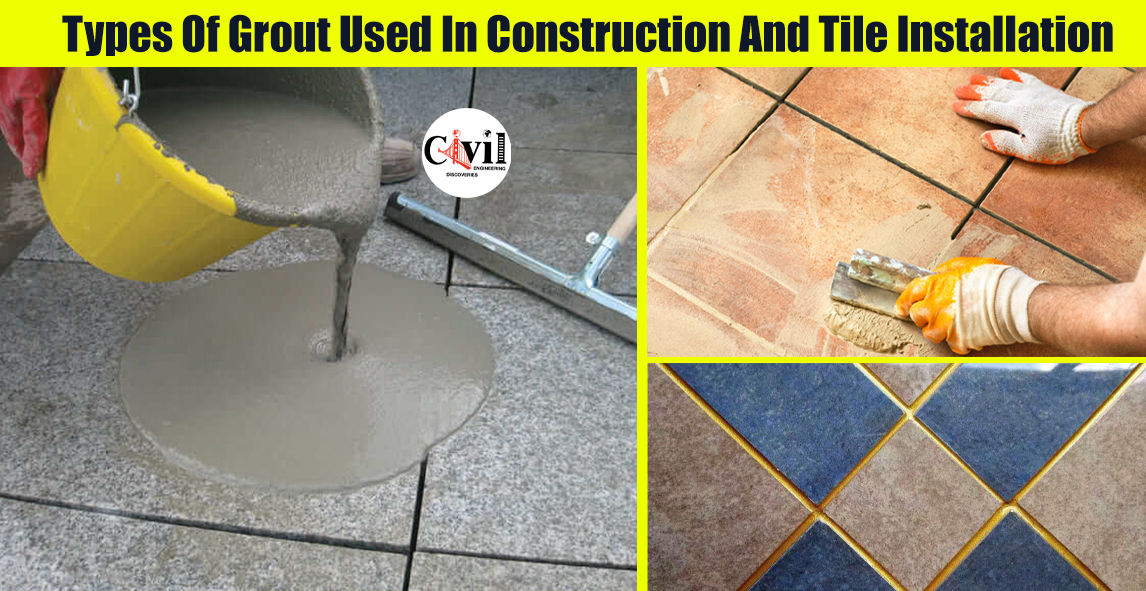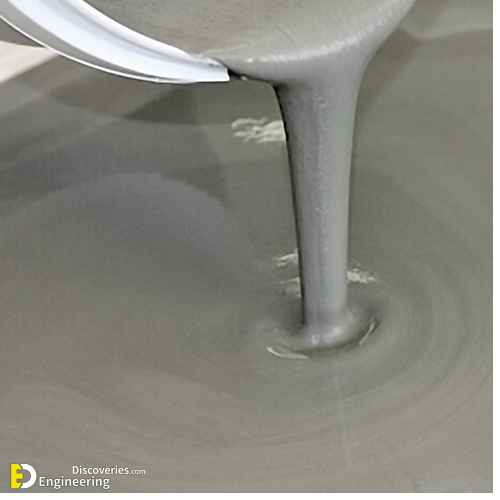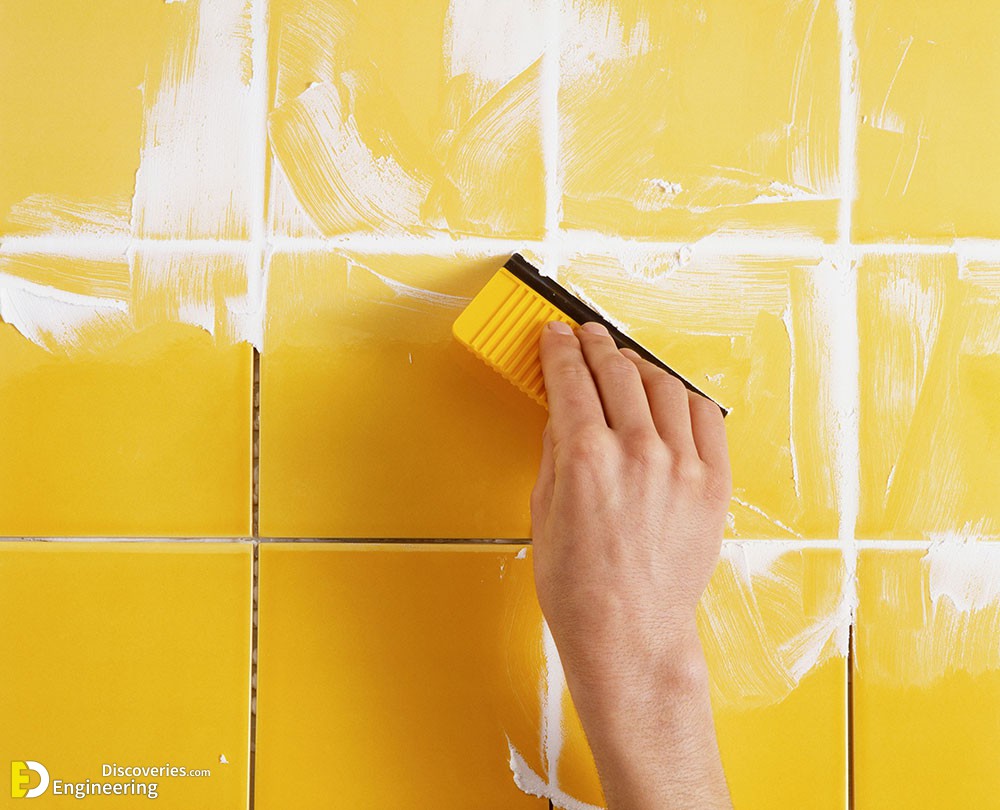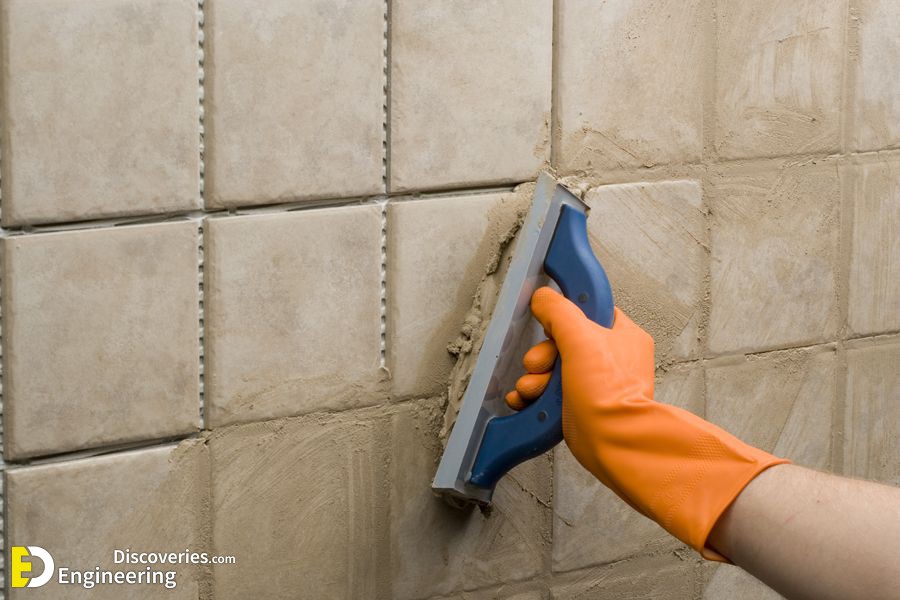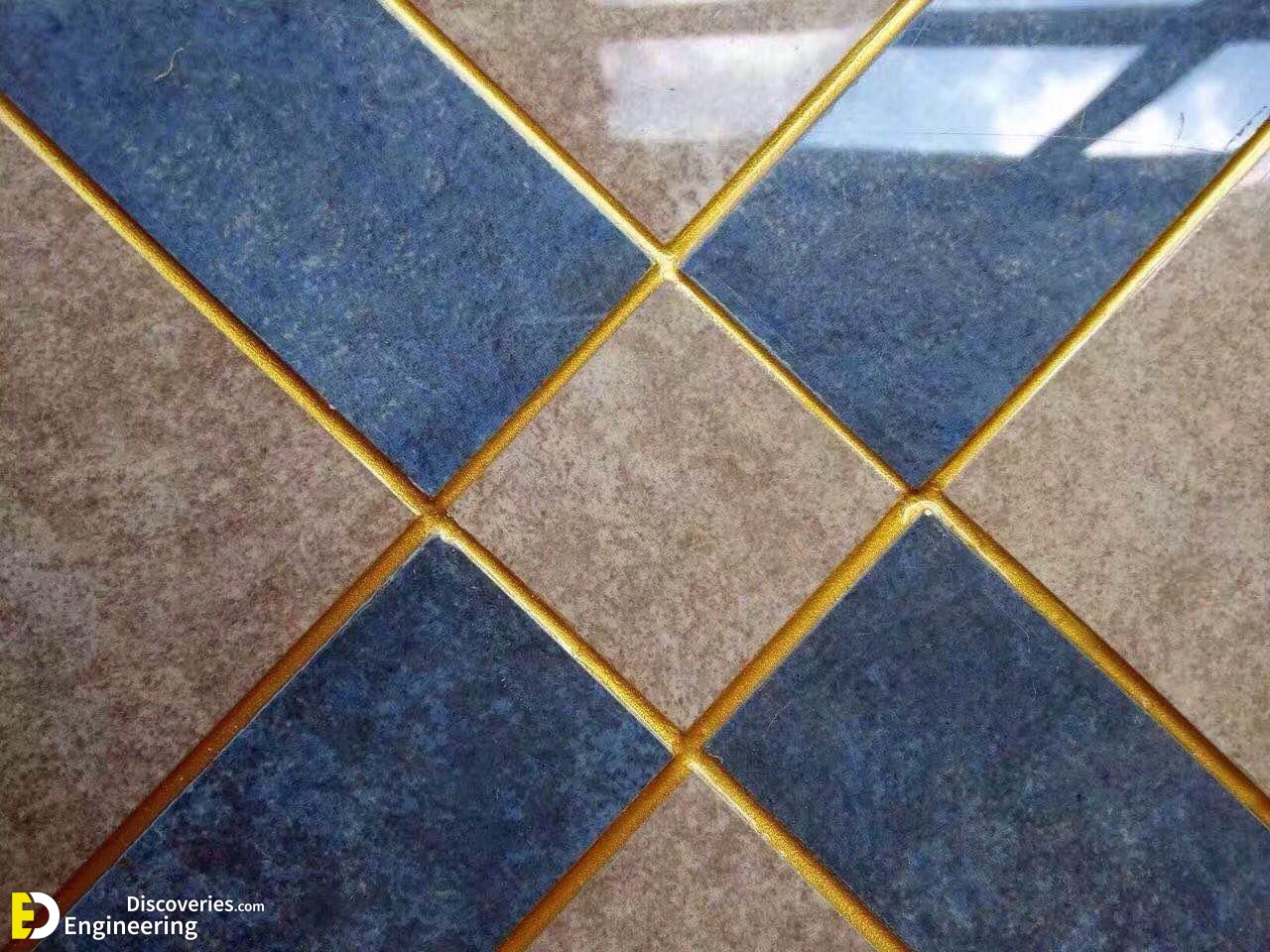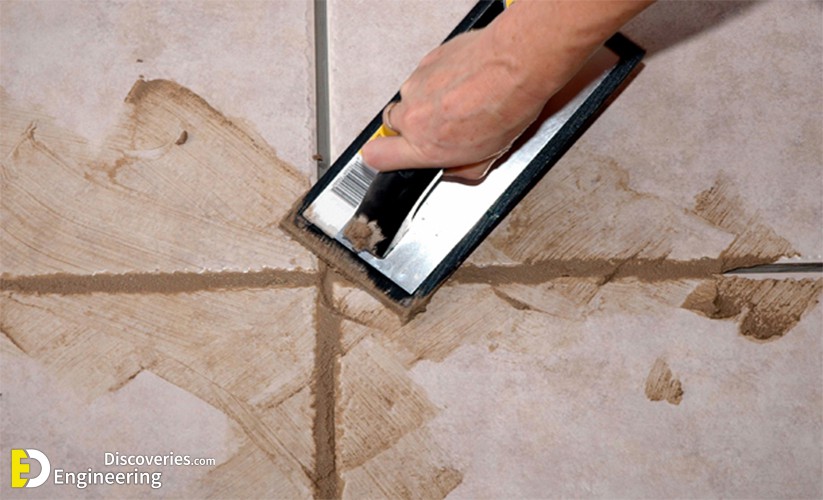What Is Grout?
Grout is usually a mixture of cement, sand, and water or chemicals that are used to fill gaps. They are used in repairing concrete cracks, filling seams and gaps in tiles, gaps for sealing and waterproofing, and for soil stabilization. It is also used to give additional strength to the foundations of load-bearing structures. Grating is basically the process of injecting a pumpable material into a structure to change its physical properties. There are different types of grouting, cement grouting, chemical grouting, and bituminous grating, depending on the material used.
Types Of Grout
1. Cementitious Grout
Cementitious grouts are the types of traditional grout material, used both in residential as well as some commercial applications. It is also known as slurry grouting or hydraulic cement grouting.
Materials used in cementitious grout are
- Portland cement,
- Filler particles of different sizes,
- Water-retentive additive,
- Colored pigments.
Cementitious grouts are available in a variety of colors that let you match or contrast with the tile. Water is mixed with the grout and then applied using a trowel. The water retentive ingredient in cementitious grouts slows down the drying time, allowing the cement to cure slowly achieving maximum hardness.
Cementitious grouts are further classified into three types
- Sanded grout
- Unsanded / Non-sanded grout
- Latex modified grout.
A. Sanded Grout
Sanded grout is composed of portland cement, sand, and other additives. The sand used is relatively larger in size. It is typically recommended for tile floors where joints are 1/8 inch to 3/8 inch wide. Sand provides extra strength to the grout joints, as it is one of the best building materials. Sanded grout is absorbent and easily attracts dirt, therefore it is always better to seal the joint when grouting is done. As sand easily makes scratches, this type of grout should not be used on easily scratched tile like marble. Sanded tile grout is less costly than unsanded grout because sand is a cheaper filler than polymers. It also provides a tight lock and a neat & clean finish.
Sanded grouts are ideal for use in
- Kitchen floor
- Bathroom floor
- Entryways
- Shower pan etc.
B. Unsanded Grout
Unsanded grout is made of portland cement and color powder pigments. No sand is used here hence also known as non-sanded grout. This type of grout is suitable for joint thickness between 1/8 to 1/16 inches. Unlike sanded grout, it is useful in scratchable surfaces such as metal, glass, marble, and natural stone tile. Unsanded grout provides a much smoother texture since the mineral particles present in it are very fine powders without having grit. However, these types of grouts easily develop cracks due to a lack of binding power. Unsanded grout is costly than sanded and you may have limited color options.
Unsanded grouts are suitable for use in
- Rectified tiles,
- Polished stones.
- Bathroom walls,
- Shower walls etc.
C. Latex Modified Grout
Sanded grouts may be composed of a latex polymer additive which increases the strength and water-proofing properties of the grout. The additives can be mixed in both dry and wet conditions.
2. Chemical Grouts
Chemical grouts consist of polymers such as epoxy, acrylic, polyurethane, sodium silicate, or any other suitable polymer. It requires the injection of chemical grouts into finer cracks that are not routable by cementitious grouts. Some useful types of chemical grouts are discussed below.
A. Epoxy Grout
Epoxy grout is consists of epoxy resin, silica fillers, pigments, and a hardener. It neither uses Portland cement nor uses water during the mixing process. Epoxy grout is very strong and durable. Additionally, it is highly resistant to stains, cracks, chemicals attack, harsh weather conditions, and climatic changes. Epoxy grouts are considerably less porous than cementitious grouts and are set up quickly. It is also much costlier than any other type of grout.
With light maintenance, epoxy grout can last lifelong if applied correctly. The strength and other properties make it perfect for any tile work, indoors or outdoors. It is suitable for use in
- High traffic areas like entryways, hallways, and foyers.
- Any type of flooring is exposed to harsh conditions like grease and acid.
- Kitchen counters and backsplash, bathrooms, etc.
Keep in mind, porous and unglazed surfaces, such as limestone or quarry tiles need to be sealed before applying epoxy grout, otherwise, it can stain the tile surfaces badly. Another major disadvantage is that it is much more difficult to shape and slope. If not done correctly, it will look plastic.
B. Furan Grout
Furan grout is similar to epoxy but composed of polymers of fortified alcohols. There is no water used in this type of grout installation. Furan is basically a combination of furan resin and a filler powder with an acid catalyst. The acid catalyst helps the resin to cure making it a thermosetting resin that has an unsurpassed chemical, physical, and thermal resistance. The tile surfaces may be smooth, abrasive, or non-skid hence they should be sealed with wax coating right after furan grout installation to protect from staining.
Furan grout is the strongest and most expensive grout material available in the market. Because of the difficulty of installation, it requires proper precautions and skilled labor.
This type of grout is suitable for use in
- Brick pavers,
- Quarry tiles.
- Industrial projects, such as laboratories, factories, dairies, and meat-packing plants.
- Areas highly exposed to chemicals and/or grease.
C. Acrylic Grout
Acrylic grout is an acrylic latex admixture composed for use as a substitute for water when grouting ceramic tile. It is specifically produced for use with AccuColor Portland cement grouts. Acrylic grout helps to make joints less susceptible to water penetration. It is very much essential when grouting wet areas. The additive further helps the grout retaining its color and resisting stains. It gives good stability in freezes and thaws. It also enhances grout flexibility.
It has greater adhesion properties. Additionally, you don’t need to cover the entire work surface. You can just apply it in between tile joints. Another advantage of using acrylic latex grout is that it can be used in small spaces. It is mostly suitable for joint thickness less than 1/8 inch.
These types of grout are especially suitable for use in
- Outdoors such as deck or garage projects.
- Fast-food restaurant floors.
- Marble work etc.
Click Here To See How To Calculate Number Of Tiles In A Room

